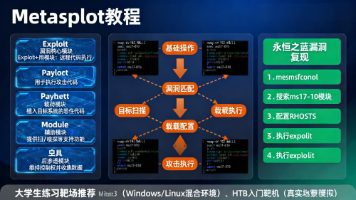LeetCode 24: Swap Nodes in Pairs
摘要:LeetCode 24题要求交换链表中相邻的节点对,不修改节点值,仅调整节点指针。推荐两种解法: 迭代法(推荐):使用虚拟头节点简化操作,通过三指针(prev、first、second)逐步交换相邻节点,时间复杂度O(n),空间复杂度O(1),易于处理边界情况。 递归法:递归交换每对节点,代码简洁但占用O(n)栈空间,适合理解递归逻辑。 对比:迭代法空间效率更优,递归法代码更简洁。核心在于合
·
LeetCode 24: Swap Nodes in Pairs
1. Problem Link 🔗
LeetCode 24: Swap Nodes in Pairs
2. Solution Overview 🧭
Given a linked list, swap every two adjacent nodes and return its head. You must solve the problem without modifying the values in the list’s nodes (i.e., only nodes themselves may be changed).
Example:
Input: head = [1,2,3,4]
Output: [2,1,4,3]
Input: head = []
Output: []
Input: head = [1]
Output: [1]
Constraints:
- The number of nodes in the list is in the range
[0, 100] 0 <= Node.val <= 100
Common approaches include:
- Iterative with Dummy Node: Use a dummy node and swap pairs iteratively
- Recursive Approach: Recursively swap pairs and connect results
- Three Pointers: Use three pointers for swapping without dummy node
3. Solution 1: Iterative with Dummy Node (Recommended)
3.1. Algorithm
- Use a dummy node to handle edge cases (empty list, single node)
- Maintain pointers:
prev,first,second - For each pair: swap first and second, update connections
- Move pointers forward by two nodes
3.2. Important Points
- Most intuitive and commonly used approach
- Handles all edge cases gracefully
- Easy to understand and implement
3.3. Java Implementation
/**
* Definition for singly-linked list.
* public class ListNode {
* int val;
* ListNode next;
* ListNode() {}
* ListNode(int val) { this.val = val; }
* ListNode(int val, ListNode next) { this.val = val; this.next = next; }
* }
*/
class Solution {
public ListNode swapPairs(ListNode head) {
// Create dummy node to handle edge cases
ListNode dummy = new ListNode(0);
dummy.next = head;
ListNode prev = dummy;
while (prev.next != null && prev.next.next != null) {
// Nodes to be swapped
ListNode first = prev.next;
ListNode second = prev.next.next;
// Swap the pair
first.next = second.next;
second.next = first;
prev.next = second;
// Move prev two steps forward
prev = first;
}
return dummy.next;
}
}
3.4. Time & Space Complexity
- Time Complexity: O(n)
- Space Complexity: O(1)
4. Solution 2: Recursive Approach
4.1. Algorithm思路
- Recursively swap pairs from the end of the list
- Base case: empty list or single node
- For each pair: swap first two nodes, recursively process the rest
- Connect the swapped pair with the recursively processed list
4.2. Important Points
- Elegant and concise
- Uses O(n) stack space
- Good for understanding recursive thinking
4.3. Java Implementation
class Solution {
public ListNode swapPairs(ListNode head) {
// Base case: empty list or single node
if (head == null || head.next == null) {
return head;
}
// Nodes to be swapped
ListNode first = head;
ListNode second = head.next;
// Swap and recursively process the rest
first.next = swapPairs(second.next);
second.next = first;
// New head after swapping
return second;
}
}
4.4. Time & Space Complexity
- Time Complexity: O(n)
- Space Complexity: O(n) for recursion stack
4. Solution Comparison 📊
| Solution | Time Complexity | Space Complexity | Advantages | Disadvantages |
|---|---|---|---|---|
| Iterative with Dummy | O(n) | O(1) | Simple, handles edges well | Uses one extra node |
| Recursive | O(n) | O(n) | Elegant, concise | Stack overflow risk |
6. Summary 📝
- Key Insight: Swap nodes in pairs by carefully updating the
nextpointers - Recommended Approach: Solution 1 (Iterative with Dummy Node) is most commonly used
- Critical Technique: Using a dummy node simplifies edge case handling
- Pattern Recognition: This is a fundamental linked list manipulation pattern
Why Dummy Node Helps:
- Eliminates special handling for head swap
- Provides a consistent starting point
- Makes the algorithm more readable
The iterative approach with dummy node is generally preferred for its simplicity, efficiency, and robustness in handling all edge cases.
更多推荐
 已为社区贡献4条内容
已为社区贡献4条内容









所有评论(0)